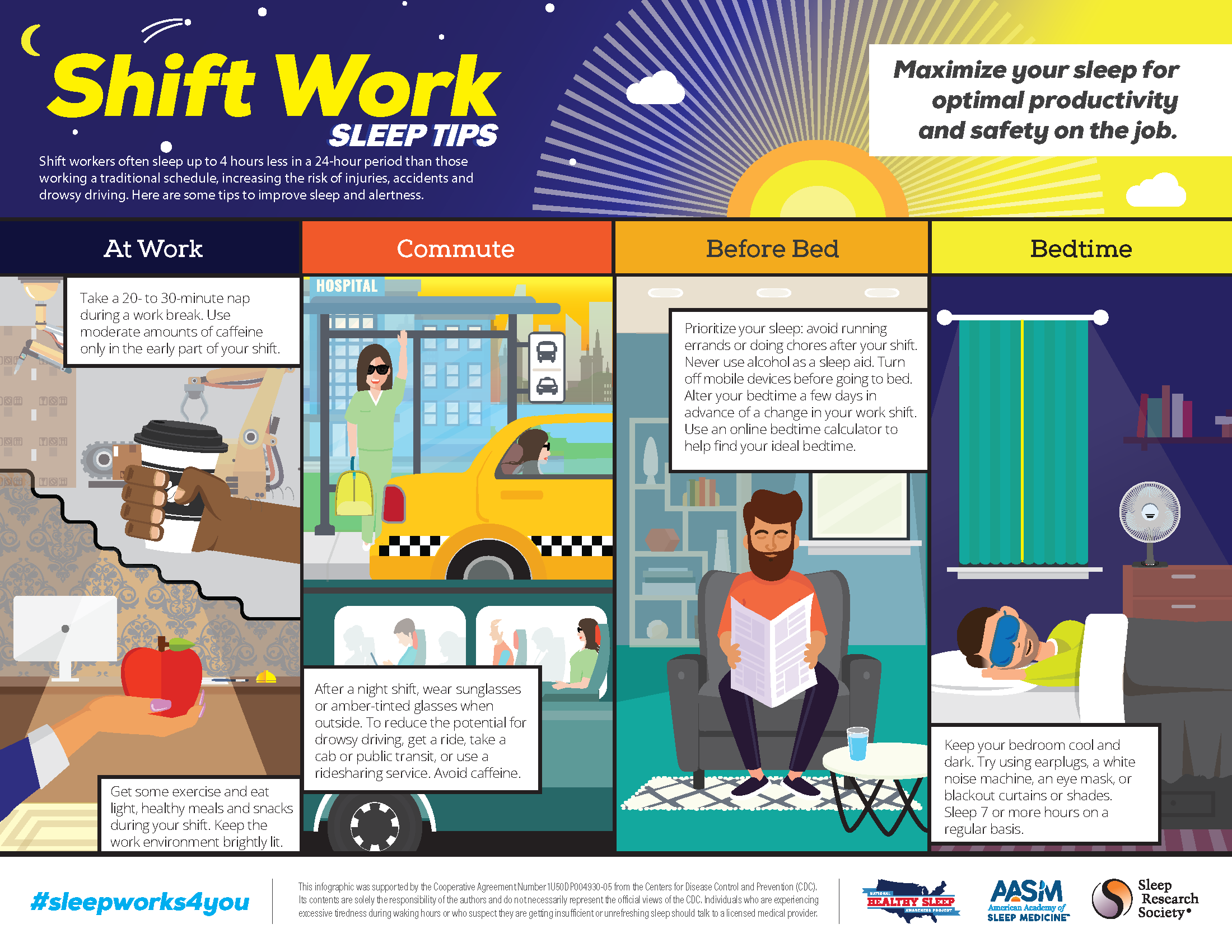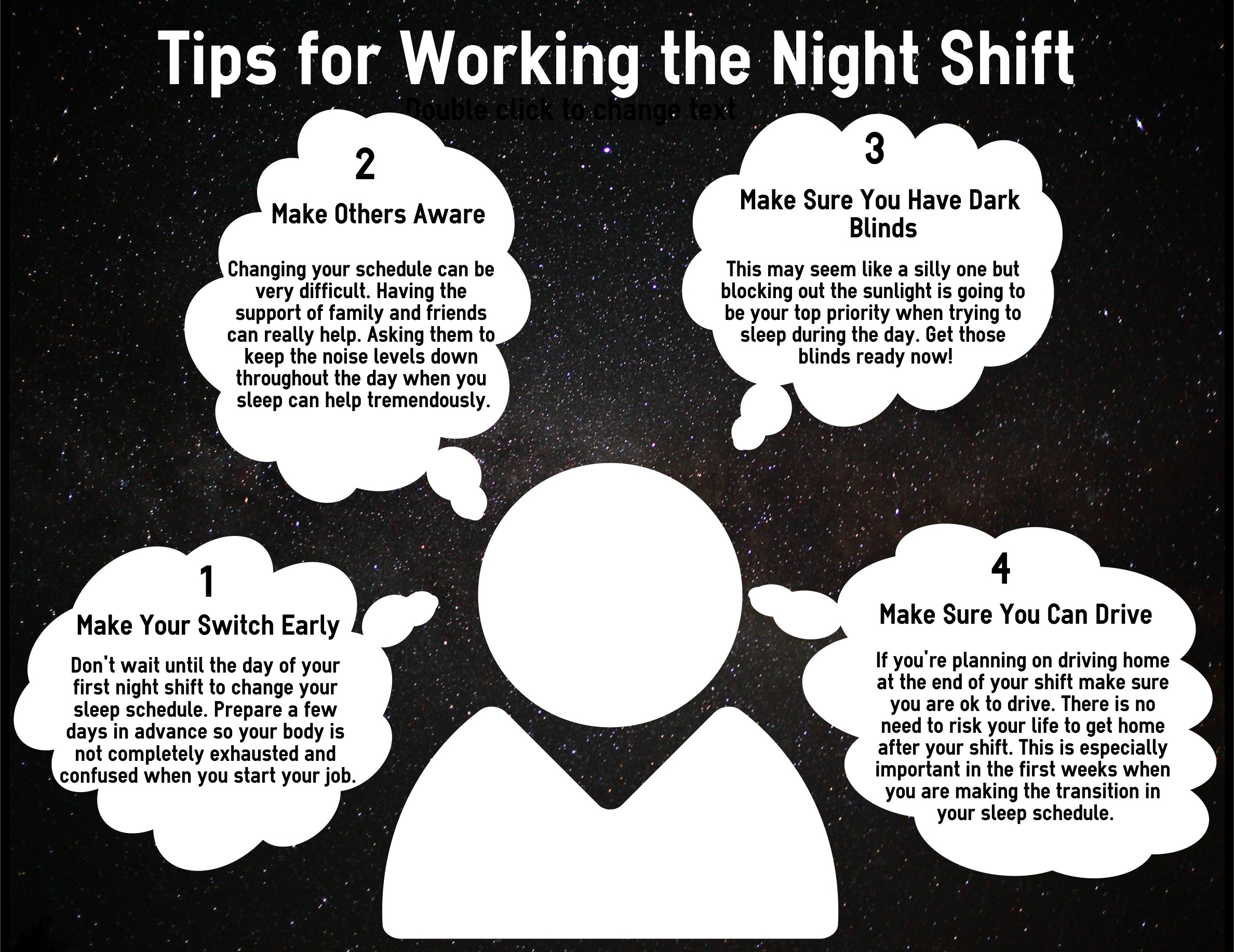Best Sleep Schedule For Night Shift Workers

URGENT: Night shift workers face a persistent crisis – disrupted sleep. Experts are now pushing revised strategies to combat fatigue and improve health outcomes for this vulnerable population.
The optimal sleep schedule for night shift workers hinges on consistency, strategic napping, and environmental control. New research emphasizes the importance of adapting circadian rhythms to unconventional work hours, a critical step to mitigate the long-term health risks associated with shift work.
Understanding the Challenge
Shift work sleep disorder (SWSD) impacts an estimated 10-40% of night shift workers. It's characterized by insomnia and excessive sleepiness, leading to impaired cognitive function and increased accident risk.
Dr. Anya Sharma, lead researcher at the Sleep Research Institute, states, "Chronic sleep deprivation disrupts hormonal balance, elevating risks of cardiovascular disease, diabetes, and certain cancers." These are the dangers that night shift workers face.
The Core Components of an Effective Sleep Schedule
Consistency is paramount. Maintaining a regular sleep-wake cycle, even on days off, is crucial to re-train the body's internal clock.
Aim for at least 7-8 hours of sleep daily. This amount is what most adults need for optimal health and function.
Strategic napping before shifts can significantly improve alertness. A 20-30 minute nap can be enough.
Practical Implementation: Before, During, and After Your Shift
Before Your Shift: Prioritize a dark, quiet sleep environment. Use blackout curtains, earplugs, and a white noise machine.
Avoid caffeine and alcohol close to your sleep time. These substances can disrupt sleep patterns.
During Your Shift: Maximize exposure to bright light during work hours. This helps suppress melatonin production and promote wakefulness.
Schedule short breaks for stretching and movement. Staying active can combat fatigue.
After Your Shift: Minimize exposure to sunlight on your commute home. Wear sunglasses and consider using a car visor.
Eat a light, healthy meal before sleeping. Avoid heavy, greasy foods that can cause digestive discomfort.
Optimizing Your Sleep Environment
Darkness is Key: Blackout curtains or blinds are essential to block out daylight. Even the smallest amount of light can disrupt sleep.
Temperature Control: A cool room is conducive to better sleep. Aim for a temperature between 60-67 degrees Fahrenheit (15-19 degrees Celsius).
Noise Reduction: Use earplugs or a white noise machine to mask distracting sounds. Create a sanctuary.
Dietary Considerations
Hydration is crucial. Drink plenty of water throughout your shift to stay alert.
Avoid sugary snacks and drinks. They can lead to energy crashes.
Focus on protein-rich foods to maintain energy levels. Eat healthy fats to promote satiety.
Medication and Supplements: Proceed with Caution
Consult a doctor before taking any sleep aids. Certain medications can have side effects or interact with other medications.
Melatonin supplements may help regulate sleep-wake cycles. However, dosage should be determined by a healthcare professional.
The Role of Employers
Companies should implement policies that support night shift workers' sleep needs. This includes providing adequate break times and flexible scheduling options.
Education programs on sleep hygiene and the risks of SWSD are vital. Companies should raise awareness.
Consider implementing rotating shift schedules that minimize the impact on circadian rhythms. Slow rotation is better than fast rotation.
Data and Statistics: The Scope of the Problem
The National Institute for Occupational Safety and Health (NIOSH) reports that shift work is linked to a 40% increase in workplace accidents. This is particularly true in industries such as healthcare, transportation, and manufacturing.
A 2023 study published in the Journal of Clinical Sleep Medicine found that cognitive performance declines significantly after just one night of sleep deprivation. It shows the significance of addressing night shift worker's sleep issues.
Dr. Michael Chen, a sleep specialist, emphasizes that "untreated SWSD can lead to long-term health problems and reduced quality of life. Early intervention is critical."
Next Steps and Ongoing Developments
Researchers are actively exploring new strategies for managing SWSD. These include personalized light therapy and innovative sleep monitoring technologies.
Individuals struggling with sleep issues should consult with a sleep specialist. A comprehensive evaluation can help determine the underlying cause and guide treatment options.
Ongoing research will continue to refine our understanding of the optimal sleep strategies for night shift workers. It is important to adapt and stay informed.

















